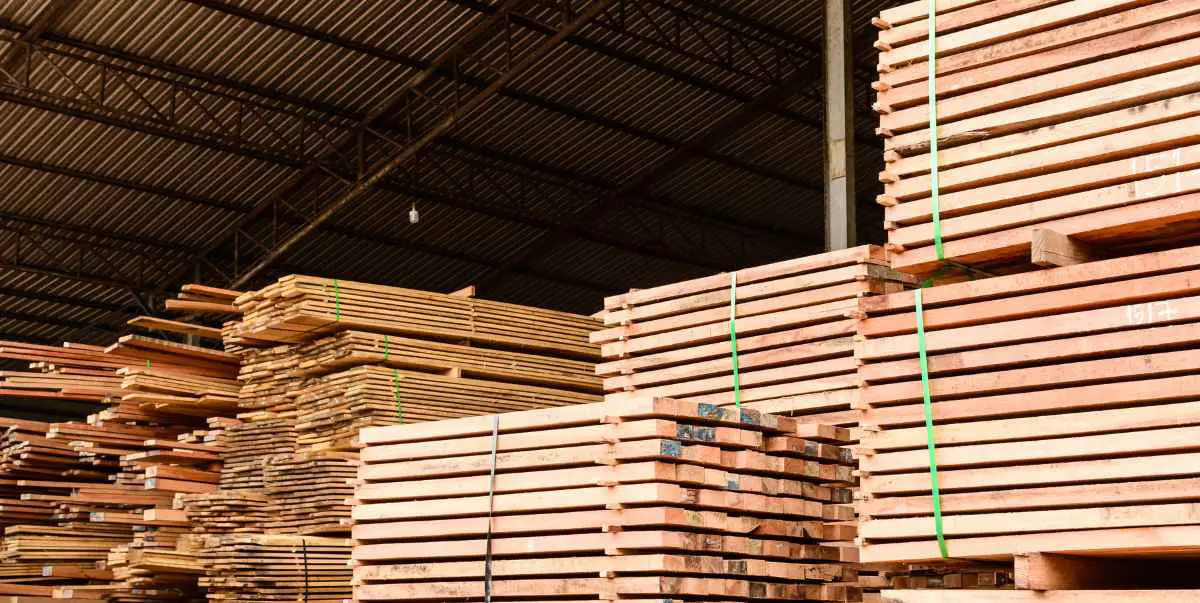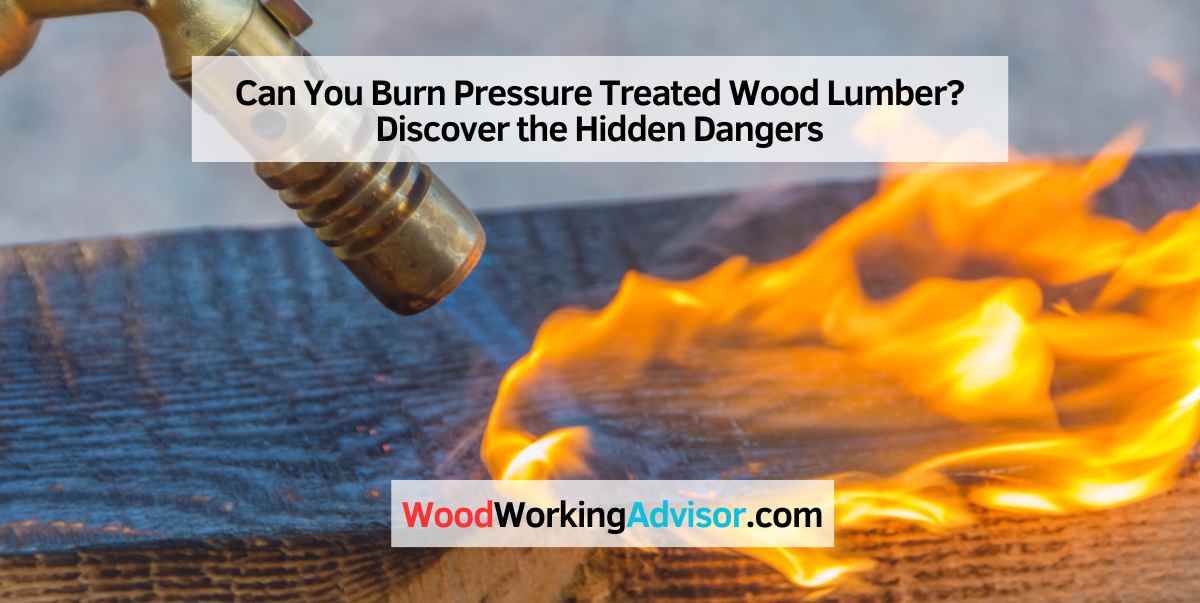Yes, you can burn pressure treated wood lumber. However, it is not recommended due to the harmful chemicals it releases when burned.
Burning pressure treated wood releases toxic fumes, such as arsenic and chromium, that can be harmful to both humans and the environment. It is safer and more environmentally friendly to dispose of pressure treated wood through proper methods, such as recycling or contacting a hazardous waste facility.
Before attempting any disposal methods, it is important to check local regulations and guidelines to ensure proper handling and disposal of pressure treated wood.
What Is Pressure-treated Wood?
A commonly used lumber in outdoor construction projects, pressure-treated wood undergoes a chemical treatment process to enhance its durability and resistance. This type of wood is infused with preservatives to safeguard it against rot, decay, and insect damage. Pressure-treated wood is easily recognizable by its green or brown color, which is due to the chemicals used during the treatment process.
Chemical Treatment Process
The chemical treatment process applied to pressure-treated wood involves subjecting the lumber to high-pressure to force the preservative chemicals deep into the wood fibers. This penetration ensures that the wood is well protected against natural elements and pests. The most commonly used preservatives are copper-based, such as alkaline copper quaternary (ACQ), copper azole (CA), and micronized copper azole (MCA).
Common Uses
Due to its enhanced durability, pressure-treated wood is widely utilized in outdoor applications where the wood is exposed to moisture, such as decks, fences, and posts. It is also frequently used for landscaping projects, retaining walls, and walkways. Its ability to withstand the elements makes it a popular choice for these types of projects, providing a longer lifespan compared to untreated wood.
Can You Burn Pressure-treated Wood?
Pressure-treated wood is commonly used in outdoor construction projects like decking, fencing, and landscaping. The wood is infused with chemical preservatives to protect it from rot, insects, and decay. However, when it comes to disposing of pressure-treated wood or using it as firewood, a common question arises: Can you burn pressure-treated wood?
Potential Risks And Dangers
Burning pressure-treated wood can pose potential risks and dangers to both your health and the environment.
Toxic Fumes And Smoke
One of the main concerns of burning pressure-treated wood is the production of toxic fumes and smoke. The chemicals used to treat the wood, such as chromated copper arsenate (CCA) or alkaline copper quaternary (ACQ), can release hazardous substances when burned.
Exposure to these toxic fumes can lead to a range of health issues, including respiratory problems, eye irritation, and skin reactions. In addition, the smoke from burning pressure-treated wood can contain pollutants that contribute to air pollution and can negatively impact the surrounding environment.
It is also important to note that burning pressure-treated wood in an indoor fireplace or stove can be particularly dangerous. The confined space can lead to a higher concentration of toxic fumes, posing a greater risk to your health.
How To Properly Dispose Of Pressure-treated Wood
Instead of burning pressure-treated wood, it is recommended to properly dispose of it through alternative methods. Here are a few options:
- Contact your local waste management facility to inquire about proper disposal methods for pressure-treated wood. They may have specific guidelines or recycling programs in place.
- If the wood is still in good condition, consider repurposing it for other outdoor projects or donating it to a local community organization.
- If you need to replace pressure-treated wood in your construction project, choose alternative materials that are more environmentally friendly, such as naturally decay-resistant wood or composite decking.
By following these proper disposal methods, you can ensure the safe and responsible management of pressure-treated wood without risking your health or impacting the environment.
Hidden Dangers Of Burning Pressure-treated Wood
Burning pressure-treated wood lumber may seem like a convenient way to dispose of it, but it comes with hidden dangers that you need to be aware of. When pressure-treated wood is burned, it releases harmful chemicals into the air, which can pose serious health hazards to both humans and the environment.
Release Of Harmful Chemicals
When pressure-treated wood is burned, it releases a cocktail of toxic chemicals into the atmosphere. The chemicals present in pressure-treated wood, such as arsenic, chromium, and copper, can be extremely harmful when inhaled or ingested.
Health Hazards
The release of these harmful chemicals can have a range of adverse health effects. For example, arsenic exposure can lead to various health problems, including lung cancer, skin cancer, and liver damage. Chromium exposure is associated with respiratory issues, kidney damage, and skin disorders. Copper exposure can cause gastrointestinal problems and liver damage.
It’s important to note that these health hazards are not limited to the individuals directly involved in burning the pressure-treated wood. The toxic chemicals can travel through the air and contaminate surrounding areas, affecting the health of anyone nearby.
To ensure your safety and the well-being of the environment, it is crucial to avoid burning pressure-treated wood lumber.
Alternatives To Burning Pressure-treated Wood
When it comes to disposing of pressure-treated wood, burning it may seem like a convenient solution at first glance. However, burning pressure-treated wood can release toxic substances and harm both human health and the environment. It is essential to explore environmentally-friendly alternatives for the proper disposal of pressure-treated wood lumber.
Proper Disposal Methods
Proper disposal of pressure-treated wood is crucial to minimize the potential negative impact on the environment. Here are a few methods for responsibly getting rid of pressure-treated wood:
- Recycling: Consider recycling centers or wood recycling organizations that accept pressure-treated lumber. These facilities have the expertise to repurpose the wood, reducing waste and preventing harmful substances from seeping into the environment.
- Landfill: If there are no recycling options available, you can dispose of pressure-treated wood at a designated landfill. However, it is necessary to contact your local waste management facility first to check if they accept such materials and follow their guidelines to ensure proper disposal.
Environmentally-friendly Alternatives
Instead of burning pressure-treated wood, there are several eco-friendly alternatives that you can explore:
- Repurposing: Find creative ways to reuse pressure-treated wood in non-burning applications. Consider repurposing it for garden beds, outdoor furniture, or decorative features like wooden planters or birdhouses.
- Composting: If the pressure-treated wood has not come into contact with chemicals such as paint or varnish, it may be suitable for composting. Cut the wood into smaller pieces to speed up the decomposition process and mix it with other compostable materials.
When it comes to disposing of pressure-treated wood, it is crucial to prioritize both human and environmental health. Utilizing proper disposal methods and exploring eco-friendly alternatives can help ensure that we minimize the negative impact on our surroundings. By taking these responsible actions, we contribute to the preservation of our ecosystem for future generations.

Tips For Handling Pressure-treated Wood Safely
Pressure-treated wood lumber is commonly used for outdoor projects such as decks, fences, and garden furniture due to its resistance to rot and insects. However, it is important to handle pressure-treated wood safely to minimize potential health risks. Here are some essential tips:
Protective Measures
- Always wear protective gloves, protective eyewear, and a dust mask when handling pressure-treated wood. This will help to protect your skin, eyes, and respiratory system from the chemicals present in the wood.
- Work in a well-ventilated area outdoors or in an area with proper air circulation. This will help to minimize your exposure to the chemicals released by the wood.
- Consider wearing long-sleeved shirts and pants to provide an additional layer of protection and minimize direct contact with the wood.
- If you are cutting or sanding pressure-treated wood, use appropriate power tools with dust collection systems to reduce the risk of inhaling sawdust.
- Wash your hands thoroughly with soap and water after handling pressure-treated wood to remove any residual chemicals.
Disposal Guidelines
Proper disposal of pressure-treated wood is crucial to prevent environmental contamination. Follow these guidelines:
- Do not burn pressure-treated wood as the chemicals used to treat the wood can release highly toxic fumes when burned.
- Check local regulations regarding the disposal of pressure-treated wood. Some areas may have specific guidelines or facilities for its disposal.
- If allowed, take the wood to a designated hazardous waste facility. These facilities have specialized processes to handle and dispose of pressure-treated wood safely.
- If a hazardous waste facility is not available, contact your local waste management department for guidance on how to dispose of pressure-treated wood properly.
By following these tips, you can handle pressure-treated wood safely and minimize the potential risks associated with its use and disposal.
Conclusion
To summarize, burning pressure-treated wood lumber can release harmful toxins into the air and pose serious health risks. It is essential to consider alternative disposal methods such as recycling or contacting a waste management facility to ensure the protection of both human health and the environment. By making informed choices, we can contribute to a safer and healthier future for all.


